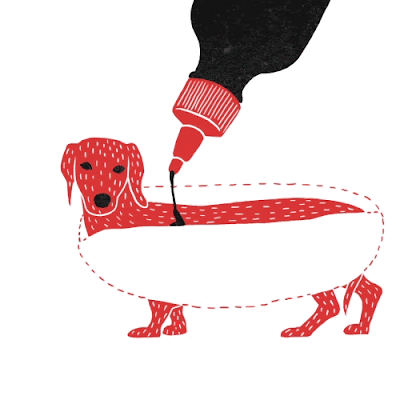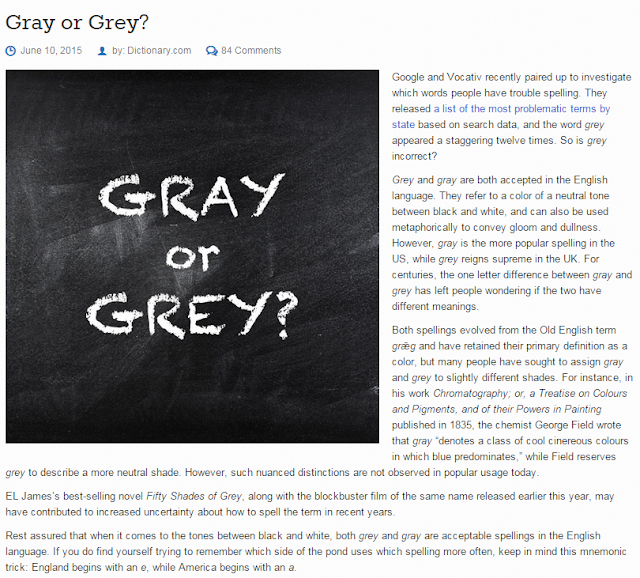應用時尚學,豹紋也來摻一咖。好文章值得一讀再讀
時間過得真快,一轉眼又是週末。
本週跟大家分享我最喜歡的專欄作家之一Rebecca Willis的文章。之前我在部落格推薦大家看The Economist的姊妺刊物Intelligent Life,因為我覺得這裡面的文章都寫得很好(手機也可以下載app這樣坐捷運也可以閱讀。
一般閱讀時尚或是生活主題雜誌(如報紙副刊),如果各位跟我一樣,都只看圖片不管文字,其實很正常,因為大多雜誌沒有好文章,圖片確實比報導本真來得精采。不過Intelligent Life扭轉了我的看法。Rebecca Willis之前幫Vogue雜誌寫過稿子,這是我第二次上傳她的文章跟各位分享。我覺得她的文字輕鬆幽默,很多比喻或是雙關語都用得很好,主題生動有趣,好讀好消化,非常值得推薦。
這一篇討論豹紋的流行(順便學學豹貓、印度豹與美洲虎的英文),從時尚與心理甚至人類學的角度去看豹紋之所以歷久不衰的魅力。文字風格謔而不虐(感謝冠中指正我先前的錯誤),反諷揶揄裡面有著嚴肅的觀點。想要寫好文章,得先多看好文章。我將此文附上中文解析,之後貼上完整(不打擾版)原始稿,讓大家驗收自己到底看懂了多少。這類型文章,很多單字用語的意思已經跳脫原意,大家要能連結上下文,融會貫通後才能解讀作者的意思,希望大家喜歡。
Striped, spotted and reticulated
Applied Fashion: animal prints動物毛皮印花 are now so familiar that they don’t roar their message在視覺上已經不那麼跳了. But Rebecca Willis reckons they still have plenty to say
From INTELLIGENT LIFE magazine, January/February 2013
Such is the madness of life in the urban jungle 都市叢林that we have to go out to a restaurant with our neighbours in order to have a proper conversation with them. Last time we did so, the Woman Next Door這邊指的是作者的鄰居,因為不方便透露對方的身分姓名,只好以女鄰居三個字(大寫)來稱呼 was wearing a scarf with a leopard-spot pattern豹紋圖騰 on it, and so was I. Our scarves were of different material, and the pattern was not identical, but the basic idea was the same. We had both added the scarf to lift the dark uniformity of our winter outfits這句的意思是,冬天的時裝顏色比較黯淡,大家都是一身黑,所以時尚女性都以豹紋圍巾來裝飾,試圖讓人眼睛為之一亮 and, we thought, make them our own. Far from it. A glance at the adjacent鄰近的 table revealed yet another leopard scarf, while across the room there was a dress in giraffe print長頸鹿毛皮圖案 and, grazing nearby眼睛往其他鄰近的地方遊走, a zebra-striped handbag斑馬紋包包. Dinner in London was beginning to resemble類似的 a game drive in the Masai Mara.作者的意思是,因為大家都穿戴動物毛皮圖案,現在在倫敦餐廳裡吃頓飯,感覺好像在非洲的野生公園裡面坐敞篷吉普車遊覽一樣。
The fashion industry loves animal prints and has been happily rotating輪流轉 them for decades—leopard one year, zebra the next, and so on. That was a great way to keep the consumers consuming讓消費者不斷消費 but after living through a few cycles I realised that if you held on to your animal print for long enough and didn’t flinch因為畏懼而退縮 it would come back into fashion again. Scarves were particularly good at this because their shape didn’t date as dresses or shoes can豹紋圖案不如服飾或是鞋子那麼容易退流行,date這邊指的是過時.
On the catwalk伸展台, leopard has always been the biggest of the big-cat prints 大貓圖案(the word leopard tends to be used as a blanket term概括性的詞彙 covering all creatures great and spotty – ocelot豹貓, cheetah印度豹, jaguar美洲虎). Strolling down my local high street I spot it (ha) in Joseph, Zadig & Voltaire, Gerard Darel…and the Oxfam shop這些都是倫敦知名的服飾潮店. Yes, someone had second thoughts about that long-sleeved dress長袖洋裝 covered in three-inch leopard spots, and with good reason. Large amounts of leopard demand something of the wearer, a certain look-at-me chutzpah厚顏無恥地想要受人矚目. A friend says she doesn’t feel brave enough to wear clothes that suggest to the world she’s a wildcat in the bedroom在床上是個風騷浪蕩女. Because that’s the accepted subtext廣為人接受的隱含意義: leopard print is sexy豹紋就是性感. Shrinking violets are probably happier in florals, or something else from the vegetable rather than the animal kingdom.(上面這一句的意思是,很多圖騰所影射的意涵其實大家都心照不宣,如豹紋就是騷包,如果不想讓人覺得自己浪蕩,那就應該選一些花花草草或是蔬菜水果的圖案比較安全)
Leopard print signals female empowerment豹紋象徵著女權 and, a little further along the same spectrum同樣的領域裡也可以說, woman as predator豹紋象徵的是女性是個強勢的掠食者. It can look brash輕率 and vulgar粗俗, with a strong whiff of the boudoir or brothel帶有一點妓院或是情色的味道, and is used to the point of cliché因為經常使用而變成時尚老梗on underwear(如內衣). But it is freighted with充滿了 other associations too.豹紋也象徵著 Fifties glamour五零年代的絢爛, Sixties bohemia六十年代的波西米亞風, Seventies free love七零年代的嬉皮性愛, Eighties power-dressing八零年代女權抬頭的時尚風—leopard print had a part to play in all of them. It’s a bit Tarzan泰山 and a bit rock’n’roll搖滾. Its versatility百搭 is the key to its longevity長壽(豹紋的百搭性是它在時尚界魅力歷久不衰的主因): what else can look slutty蕩婦 in synthetic人造纖維布料 in a red-light district and classy典雅 in silk at the neck of an ageing dowager年邁的皇太后? 上句話的意思是,豹紋之所以百搭,是因為這個圖案印在人造合成布料可以風騷,印在絲綢布,圍在皇太后的脖子上看起來又可以典雅How it reads depends on how it is used, 所以要騷要端莊全看怎麼搭配and in part that is about quantity適量的豹紋有畫龍點睛之妙. You don’t have to go as far as the man who had leopard spots tattooed刺青 over his entire body to overdo it不要過頭即可. The scarf is a cautious toe in the water豹紋圍巾相對保守,因為不會太放或是太跳。a cautious toe in the water意思是要試試水溫如何,又不想要被燙到的時候,用一根腳趾(大拇頭)探進水裡(而不是整隻腳)是最好的方式.
It is telling that the fascination with fabrics that mimic animal pelts endures in an era when killing animals themselves for sartorial 嘲諷purposes is completely hors de question這是法文,中文的意思是,完全不可能out of the question, unless you’re European royalty. 歐洲皇室(上面這句的意思是,近年來保育意識抬頭,獵殺動物或是穿戴毛皮飽受批判,作者故意以此幽默,表示這年頭除非你是歐洲皇室,可以理所當然地騎著馬去打獵,不然想要穿真皮的服裝就等著被大家圍攻). Animal prints are a quotation豹皮圖案其實是一種(情感的)表述, not just from the animal itself but from the primitive days when we wore animal skins, and—more recently—when wearing real fur was considered glamorous. Perhaps we have an atavistic urge返祖渴望(想要回歸原始祖先的渴求) to wear animals, a nostalgia for the days when we were hunters懷念人類早期的狩獵生活 and they signified our dominance over nature披著動物毛皮意味著人類戰勝自然, and hence our survival是我們之所以存活至今的最好標記.
Today fashion is so polyglot多種語言(此指版本眾多且各個不同) that all species of animal print—including the odd reptile爬蟲類(如鱷魚或是蛇) one, too—are in the shops most of the time. They may be realistic, straight out of National Geographic, or stylised, abstracted until they morph into generic tribal print與部落圖騰合為一體. They can be monochrome單一色調的 or on, say, an electric-blue 電光藍background. Whatever the form, they are rarely what you’d call quiet. Yet in recent months I have read several times that "leopard print is the new neutral豹紋是新中性時尚" and "animal prints are the new wardrobe staple動物紋是新時尚主流staple是主要的意思". Even by fashion-speak standards that’s a weird claim: how can something so busily striped, spotted or reticulated格網狀的 be neutral中性的 or basic? But perhaps there’s some truth in it: animal print—like denim丹寧布—is now so ubiquitous無所不在 that it doesn’t roar its messages as it once did(這一句話的意思是,豹紋因為無所不在,所以現在已經不像過去感覺上那麼跳了).
The leopard scarf in particular is an epidemic豹紋圍巾像是傳染病, infecting accessories and clothes rails感染了配件與服飾, airport lounges and street markets. Like the ruffs十六與十七世紀歐洲顯貴脖子上裝飾的襞襟(樣子像是立體的皺折) worn at the neck in 16th-century Europe, it has become a tribal badge部落(族群)標記, and just as ruffs were socio-economic indicators社會與經濟地位指標—they could be small and simple, or ornate and a foot wide—so the animal-print scarf is available in 100% polyester聚酯, 100% cashmere羊毛 and everything in between或是介於人造與毛料之間的任何材質. What nature designed to camouflage偽裝/掩飾 wild creatures in the dappled斑紋的 light of the African bush, we have tamed被訓練成(被馴服) to blend in跟他人一樣(融入群眾) today. The cat that walked by himself has joined the herd(流行走到這個地步,現在就連貓科動物也來摻一咖了).
Rebecca Willis is our associate editor and a former travel editor of Vogue
Illustration Bill Brown
完整文章如下
Applied Fashion: animal prints are now so familiar that they don’t roar their message. But Rebecca Willis reckons they still have plenty to say
From INTELLIGENT LIFE magazine, January/February 2013
Such is the madness of life in the urban jungle that we have to go out to a restaurant with our neighbours in order to have a proper conversation with them. Last time we did so, the Woman Next Door was wearing a scarf with a leopard-spot pattern on it, and so was I. Our scarves were of different material, and the pattern was not identical, but the basic idea was the same. We had both added the scarf to lift the dark uniformity of our winter outfits and, we thought, make them our own. Far from it. A glance at the adjacent table revealed yet another leopard scarf, while across the room there was a dress in giraffe print and, grazing nearby, a zebra-striped handbag. Dinner in London was beginning to resemble a game drive in the Masai Mara.
The fashion industry loves animal prints and has been happily rotating them for decades—leopard one year, zebra the next, and so on. That was a great way to keep the consumers consuming, but after living through a few cycles I realised that if you held on to your animal print for long enough and didn’t flinch, it would come back into fashion again. Scarves were particularly good at this because their shape didn’t date as dresses or shoes can.
On the catwalk, leopard has always been the biggest of the big-cat prints (the word leopard tends to be used as a blanket term covering all creatures great and spotty – ocelot, cheetah, jaguar). Strolling down my local high street I spot it (ha) in Joseph, Zadig & Voltaire, Gerard Darel…and the Oxfam shop. Yes, someone had second thoughts about that long-sleeved dress covered in three-inch leopard spots, and with good reason. Large amounts of leopard demand something of the wearer, a certain look-at-me chutzpah. A friend says she doesn’t feel brave enough to wear clothes that suggest to the world she’s a wildcat in the bedroom. Because that’s the accepted subtext: leopard print is sexy. Shrinking violets are probably happier in florals, or something else from the vegetable rather than the animal kingdom.
Leopard print signals female empowerment and, a little further along the same spectrum, woman as predator. It can look brash and vulgar, with a strong whiff of the boudoir or brothel, and is used to the point of cliché on underwear. But it is freighted with other associations too. Fifties glamour, Sixties bohemia, Seventies free love, Eighties power-dressing—leopard print had a part to play in all of them. It’s a bit Tarzan and a bit rock’n’roll. Its versatility is the key to its longevity: what else can look slutty in synthetic in a red-light district and classy in silk at the neck of an ageing dowager? How it reads depends on how it is used, and in part that is about quantity. You don’t have to go as far as the man who had leopard spots tattooed over his entire body to overdo it. The scarf is a cautious toe in the water.
It is telling that the fascination with fabrics that mimic animal pelts endures in an era when killing animals themselves for sartorial purposes is completely hors de question, unless you’re European royalty. Animal prints are a quotation, not just from the animal itself but from the primitive days when we wore animal skins, and—more recently—when wearing real fur was considered glamorous. Perhaps we have an atavistic urge to wear animals, a nostalgia for the days when we were hunters and they signified our dominance over nature, and hence our survival.
Today fashion is so polyglot that all species of animal print—including the odd reptile one, too—are in the shops most of the time. They may be realistic, straight out of National Geographic, or stylised, abstracted until they morph into generic tribal print. They can be monochrome or on, say, an electric-blue background. Whatever the form, they are rarely what you’d call quiet. Yet in recent months I have read several times that "leopard print is the new neutral" and "animal prints are the new wardrobe staple". Even by fashion-speak standards that’s a weird claim: how can something so busily striped, spotted or reticulated be neutral or basic? But perhaps there’s some truth in it: animal print—like denim—is now so ubiquitous that it doesn’t roar its messages as it once did.
The leopard scarf in particular is an epidemic, infecting accessories and clothes rails, airport lounges and street markets. Like the ruffs worn at the neck in 16th-century Europe, it has become a tribal badge, and just as ruffs were socio-economic indicators—they could be small and simple, or ornate and a foot wide—so the animal-print scarf is available in 100% polyester, 100% cashmere and everything in between. What nature designed to camouflage wild creatures in the dappled light of the African bush, we have tamed to blend in today. The cat that walked by himself has joined the herd.
Rebecca Willis is our associate editor and a former travel editor of Vogue
Illustration Bill Brown












再次感謝Chloe老師,
回覆刪除今天CSU(Colorado St.U.)寄來錄取通知,
我簡直又驚又喜,沒有想過會錄取排名二級的學校。
無論如何,還是再次感謝老師曾經指導我的聽說。
之後我會去上老師開的寫作班。
See you!
Dear Ken,
回覆刪除哇!恭喜你。You totally deserve it!
很期待見到你咧
下周一就快到了,見面再敘舊!